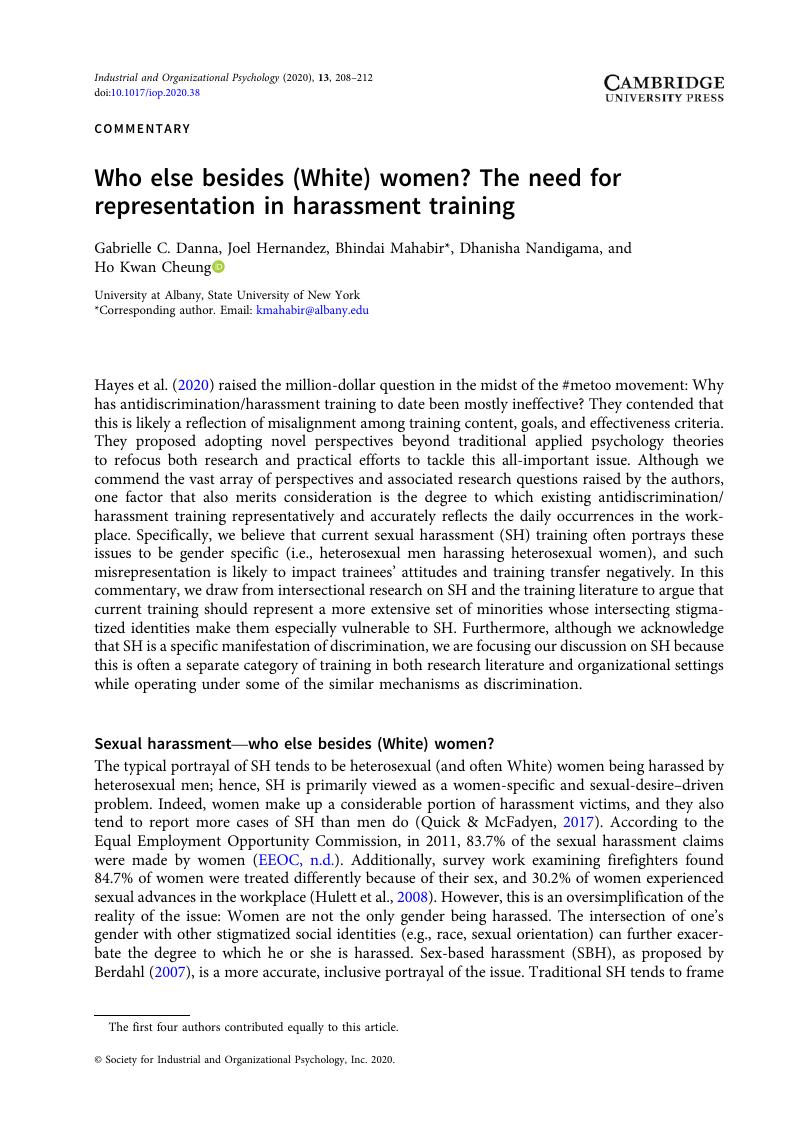Crossref Citations
This article has been cited by the following publications. This list is generated based on data provided by Crossref.
Spalding, Kerry E.
Schachtman, Rebecca
and
Kaiser, Cheryl R.
2024.
The Delegitimization of Women’s Claims of Ingroup-Directed Sexism.
Sex Roles,
Vol. 90,
Issue. 3,
p.
444.
Schachtman, Rebecca
Gallegos, Jonathan
and
Kaiser, Cheryl R.
2025.
Gender Prototypes Hinder Bystander Intervention in Women’s Sexual Harassment.
Personality and Social Psychology Bulletin,
Vol. 51,
Issue. 6,
p.
1007.
Bye, Hege H.
and
Bjørkelo, Brita
2025.
To Add or to Multiply? Gender, Sexual Minority Status, and Sexual Harassment in the Norwegian Police Service.
Journal of Business and Psychology,
Vol. 40,
Issue. 2,
p.
405.



